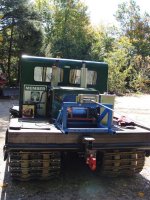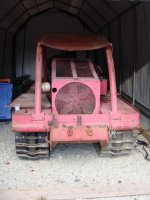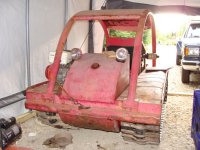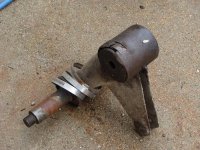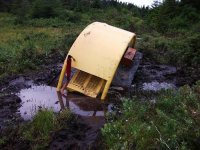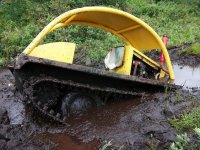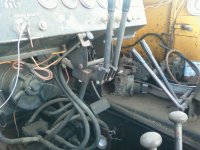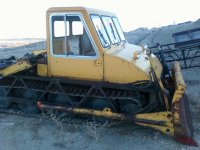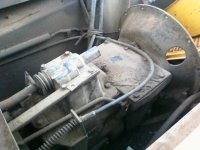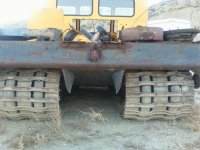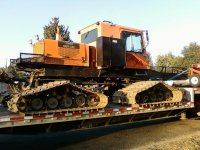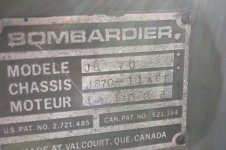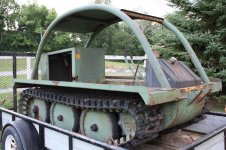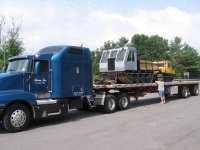People have all sorts of names for Muskegs, J5s and SWs. They mix them all up together. To me, it's like calling a Ford Explorer an F350. They are not the same. Each model has it's own name just like cars and trucks do.
A "Bombi" is a model of Bombardier. It has the smaller differential.
An SW comes in different widths. ( Boggie can explain these better than me when he has time) They have the same differential and wheels as J5 and Muskeg until the 1980s models. They have 14 inch wide tracks.
A J5 is 60-64 inches wide and has 16" wide tracks. They have 6 wheels and 2 drive sprockets. They were made out of 1/16" thick steel in the early years ( 60"wide). Even the differential housing is 1/16" and tend to rust and leak. These are easy to recognise by the pressed in corrugation on the side decks that are spaced about every 16". I guess they were to stiffen them up some. Some of the earliest J5s had smaller axles. Standard axle size on most is 2" with the bearings going on a 1.5" shaft diam..
After about 1955, the J5 was made out of 1/8" steel and the front of the differential housing was often reinforced. These are much stiffer and don't oilcan like the earlier ones.
Muskegs have two rows of wheels in the tracks for a total of 16 wheels and 4 drive sprockets. The tracks are 28" wide. The machine is 88" wide ( 7 feet 4 inches) Engine can be in the front = Carrier, or center = Tractor. They have a ladder thing down the sides that supports the axles.
Photos: First, rear of older (thin body) J5
Second: rear of Muskeg
Third: side of Muskeg
A "Bombi" is a model of Bombardier. It has the smaller differential.
An SW comes in different widths. ( Boggie can explain these better than me when he has time) They have the same differential and wheels as J5 and Muskeg until the 1980s models. They have 14 inch wide tracks.
A J5 is 60-64 inches wide and has 16" wide tracks. They have 6 wheels and 2 drive sprockets. They were made out of 1/16" thick steel in the early years ( 60"wide). Even the differential housing is 1/16" and tend to rust and leak. These are easy to recognise by the pressed in corrugation on the side decks that are spaced about every 16". I guess they were to stiffen them up some. Some of the earliest J5s had smaller axles. Standard axle size on most is 2" with the bearings going on a 1.5" shaft diam..
After about 1955, the J5 was made out of 1/8" steel and the front of the differential housing was often reinforced. These are much stiffer and don't oilcan like the earlier ones.
Muskegs have two rows of wheels in the tracks for a total of 16 wheels and 4 drive sprockets. The tracks are 28" wide. The machine is 88" wide ( 7 feet 4 inches) Engine can be in the front = Carrier, or center = Tractor. They have a ladder thing down the sides that supports the axles.
Photos: First, rear of older (thin body) J5
Second: rear of Muskeg
Third: side of Muskeg
Attachments
Last edited:

